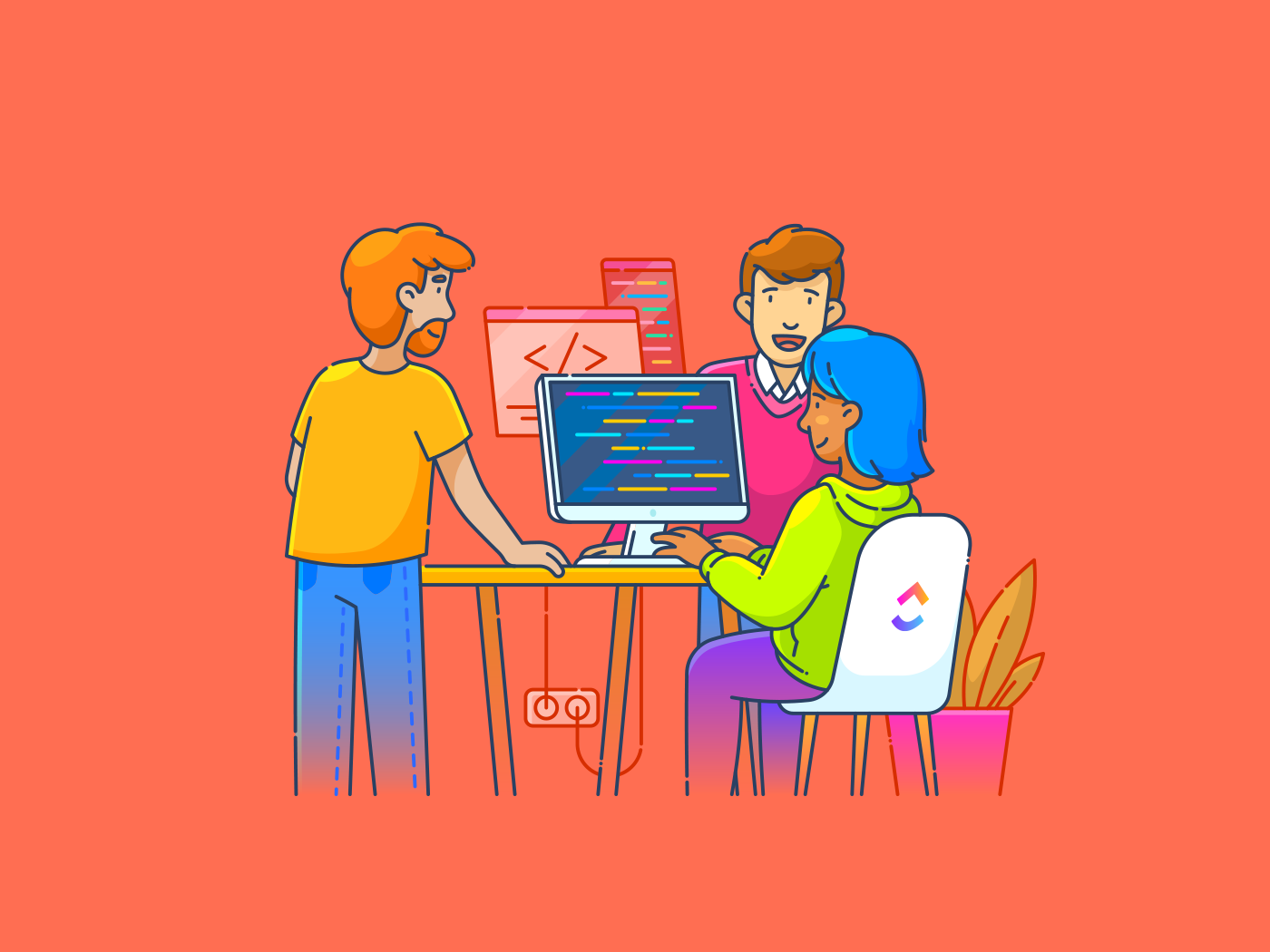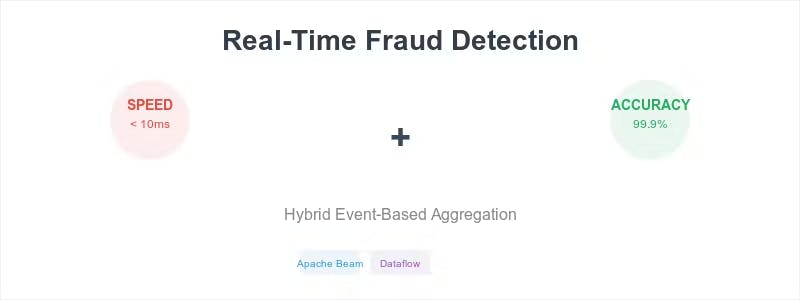Suppose you have a groundbreaking app idea that could streamline your internal processes, woo your customers, and automate a service you have been manually handling for months. The kind of idea that could seriously help you scale up your business. Or maybe it’s just throwaway weekend projects that keep you busy.
But how do you turn this into a reality when your small dev team is already swamped with work, and you’re not a full-stack engineer yourself?
Vibe coding solves this problem. All you have to do is describe what you want to an AI system designed for programming, and it will generate a working code for your app or feature in seconds. You can improve it with further guided prompts until your vision comes to life.
This boosts your developers’ productivity and lets you focus on scaling the business idea while the AI handles the technical heavy lifting. In this article, we discuss vibe coding, the tools you will need, and how you can set it up with little to no coding experience.
Vibe Coding Explained: Tools, Tips & Setup Inspiration
What Is Vibe Coding?
Vibe coding is a new-age software development approach describe what you want using natural language to a large language model (LLM) designed for writing code. You can use a simple prompt made up of a few sentences and the system then generates the source code. With vibe coding, programmers and folks without coding knowledge can guide, test, and refine AI-generated output instead of writing code from scratch.
Vibe coding is one of the most popular software engineering trends because it speeds up development with automated code generation from natural language prompts.
If you’re a beginner to coding or don’t have experienced developers on your team, vibe coding tools are about to become your new best friend. This is because the vibe coding approach lets you build functional software with simple descriptions in plain language.
It’s also ideal for rapid prototyping and faster iteration cycles.
This post by Andrej Karpathy—the developer who coined the phrase—perfectly explains the vibe coding process:

⭐ Featured Template
Struggling to juggle roadmaps, features, and bugs across scattered tools? Try the Software Development Template—built for product, design, engineering, and QA teams to plan, build, and ship in one collaborative space. Scrum or Kanban? It’s all here.
👀 Did you know? 25% of startups in Y Combinator’s Winter 2025 batch reported that 95% of their codebases were AI-generated. This shift underscores the growing reliance on AI tools in software development.
When to choose vibe coding vs. traditional development?
Choosing between vibe coding (a more rapid, collaborative, and sometimes low-code approach) and traditional development depends on your project goals, team structure, and desired speed of delivery.
While vibe coding emphasizes iteration, community, and creativity, traditional development is best for structured, large-scale systems with rigorous requirements.
Here’s a quick comparison to guide your decision:
| Factor | Vibe Coding | Traditional Development |
| Speed of Execution | Fast prototyping and iteration | Slower but more thorough and stable |
| Team Size | Ideal for small, cross-functional teams | Better suited for larger, specialized teams |
| Project Complexity | Best for MVPs, prototypes, creative or experimental projects | Required for enterprise-grade, security-critical applications |
| Tooling | Uses visual tools, AI pair-programming, low-code elements | Heavy reliance on IDEs, CI/CD pipelines, full-stack setup |
| Flexibility | High – encourages fast pivots and improvisation | Low – changes often require rework and re-approval |
| Collaboration Style | Real-time, informal, async-friendly | Structured workflows and defined roles |
| Technical Debt Risk | Higher, especially if not cleaned up after rapid builds | Lower, with proper planning and code reviews |
| Best For | Startups, hackathons, content-driven products, quick demos | Banks, SaaS platforms, systems with compliance or legal needs |
Mastering the Prompt-to-Code Pipeline
🤖 Fact Check: According to recent research, about 97% of developers, engineers, and programmers use AI tools for coding, with 88% saying their companies actively support it.
Using AI for software development starts with creating detailed prompts that guide AI coding tools to generate clean code with precision. Next, you need to apply some refinement techniques to ensure the final output aligns with your vision.
Here is how you can do it:
Crafting high-quality prompts for precise code generation
Follow these steps to create effective prompts for vibe coding:
- Be very specific about your requirements: Instead of saying ‘Create a to-do app,’ try ‘Create a to-do app with user authentication, a task list, and the ability to mark tasks complete.’ The more detail, the better the AI’s output
- Define the technology stack: Specify the languages and frameworks you want your software development tools to use. For example, prompts like ‘Generate a React app with a Node.js backend and MongoDB as the database’ provide clear direction for the AI
- Mention functionality and features: List the core features you need and how they should work. For example, ‘Create a login page with email validation and a password reset option’ helps the AI understand the functionality you expect
- Use simple, natural language: Focus on what you want to achieve rather than how you think it should be done. For example, ‘Create a button that fetches data from an API’ instead of ‘Write a function that calls an API and binds the response to a button’
- Break complex tasks into smaller prompts: Don’t overload the AI with coding tasks for the entire app. Start with setting up the database, then move to backend routes, and then the frontend
- Include edge cases and constraints: Mention rules like ‘Only accept emails in the format [email protected]’ to guide more accurate code generation
- Provide Example Outputs: Show what you expect, like ‘Generate a table that displays a list of users with the following columns: name, email, and last login date.’ This offers the tool a clearer vision of the desired outcome
Iterative refinement techniques
Now that the AI has generated codes according to your prompts, it might need further refinement. Here is what you can do to fine-tune your AI-generated code and bring it closer to your original idea.
First, isolate and fix issues by prompting only the problematic section of code. Then use ‘Modify this to…’ prompts to change behaviors and add new features. Adding more detailed constraints helps the system handle edge cases and specific rules.
Then feed the prompt for tests to validate functionality and catch errors early. Make sure you summarize your intent clearly when the output starts to drift. Build in layers by adding a single additional feature and component at a time.
Not sure what specific parts of the code represent? Ask for explanations to understand it better and guide more targeted refinements. If your team has developed code before, loop back improvements with previous outputs as the new input.
🧠 Fun fact: Amazon uses the ‘Two-Pizza Team’ concept to create small teams that can be fed with two pizzas. These compact, autonomous squads helped build things like AWS and Prime—proving that small teams can move fast, innovate freely, and create entire platforms without heavyweight processes.
Just investing in AI coding tools won’t get you the desired results. It’s important to keep development tasks on track, and collaborate with your team to build new features. And there’s a perfect tool for that.
, the everything app for work, can be customized easily to be your software project management center for AI-assisted development.
From writing documentation for code and generating prompts to tracking iterations and managing feedback, our platform helps you stay on top of every step.
It’s perfect for planning architecture for full-stack apps, assigning vibe coding tasks, storing code snippets, and collaborating with your team.
1. Break down features into iterative and outcome-focused tasks
Instead of trying to complete an entire product module in a single sprint, break down your envisioned features into smaller tasks tied to specific user outcomes. This helps you craft more targeted prompts and ensures the AI tool generates effective code for each specification.
For instance, instead of simply saying, “Build the entire user authentication module in one sprint,” split the model and tie it to the final results.
Task 1: Implement user sign-up functionality
- Outcome: Users can create new accounts using email and password
Task 1: Add email verification after sign-up
- Outcome: Users receive a verification email and must confirm their address before accessing the app
Task 3: Develop user login with error handling
- Outcome: Users can log in securely and receive clear feedback on failed attempts
Task 4 : Enable password reset via email
- Outcome: Users can request a password reset and set a new password through a secure link
Task 5: Integrate social login (Google, Facebook)
- Outcome: Users can sign up or log in using their social accounts for convenience
This way, your team can also test, release, and refine these outputs according to feedback.
But how do you ensure each task is progressing on time? A software project management tool like is the answer.


Use AI tools like Brain to:
- Generate vibe coding prompts and feed the output to get iteration tips
- Look for reasons behind error messages and identify security vulnerabilities
- Bridge gaps in your product development strategies with targeted suggestions
- Scan tasks, specs, and bug reports for missing details, contradictions, or logic gaps


⭐️ Bonus: also lets you switch between LLMs like ChatGPT, Gemini, and Claude for multiple coding, research, writing, and editing tasks, right from your Workspace, so you don’t need to switch between tabs and lose context.


Moreover, you get software development templates to help you get started with vibe coding.
For example, the Software Development Template lets your teams collaborate in a single workspace to build and maintain a product roadmap. You can finalize product features and fix bugs using a flexible Scrum or Kanban methodology.
Friendly Tip: Tools like Postman can help streamline API testing and documentation so your developers can stay focused on building features. Plus, you can also use Whiteboards to create quick wireframes and user journey maps before turning them into tasks.
2. Establish real-time collaboration and knowledge sharing
Clear communication and real-time collaboration are paramount to creating apps with vibe coding. You and your team must brainstorm on prompts, outline iteration steps, and additional contexts to refine outputs and identify issues together for effective software project management.
Here’s how helps
- Create a shared knowledge base with documented coding prompts, bug histories, and feature specs so everyone works from the same context
- Run async stand-ups and sprint updates with video like Loom, Slack, or Clips to keep everyone aligned without interrupting deep work
- Use collaborative docs like on Docs for ideation, where developers, PMs, and QA teams can comment, suggest changes, and assign action items directly
- Host weekly prompt refinement sessions to review AI outputs, identify improvement areas, and align on iteration goals
However, if you use multiple collaboration tools, you may lose important context.
🤖 Fact Check: Research shows that 42% of work disruptions result from juggling platforms, managing emails, and jumping between meetings. simplifies this with built-in collaboration tools.
Docs


With Docs, your entire team can create, edit, and collaborate on product specs, engineering guidelines, QA checklists, and launch plans—all in the same place where the work actually happens. You can use it to:
- Draft and maintain up-to-date feature specifications
- Build reusable templates for sprint planning and bug triage
- Embed code snippets, diagrams, and tables for dev clarity
- Tag teammates, assign action items, and turn ideas into tasks, right from the doc
🧠 Fun Fact: Margaret Hamilton is famously known for writing code by hand for NASA. She was the lead software engineer for the Apollo space program at MIT’s Instrumentation Laboratory, which developed the onboard software for the Apollo missions, including Apollo 11, the first successful moon landing.
Chat
Use Chat to discuss specific plan parts and mention teammates in the document. You can also tag specific vibe coding tasks to the right people.


Assign discussion-based tasks from team chats and docs with Assign Comments. This ensures all your important conversations turn into actionable items without losing momentum.
📮 Insight: 13% of our survey respondents want to use AI to make difficult decisions and solve complex problems. However, only 28% say they use AI regularly at work.
A possible reason: Security concerns! Users may not want to share sensitive decision-making data with an external AI. solves this by bringing AI-powered problem-solving right to your secure Workspace. From SOC 2 to ISO standards, is compliant with the highest data security standards and helps you securely use generative AI technology across your workspace.
3. Automate repetitive vibe coding workflows
Your software team isn’t just building features; they’re seeking updates, changing task statuses, pinging teammates for reviews, and updating docs after every sprint.
All that manual busywork piles up fast, leading to delays, missed updates, and burnout.
Automate the repetitive workflows, like assigning tasks, setting due dates, and syncing PR status to keep the app development project in motion without the grunt work. This lets your developers stay in flow while ensuring updates happen without manual intervention.
Here’s how helps


Automations solves this by letting you automate repetitive actions across your workflows. With 50+ trigger-action combinations, you can streamline everything in your entire codebase, from sprint management to bug tracking. This helps your team focus on the actual vibe coding tasks.
Here is what you can automate with just a few clicks:
- When a bug is marked ‘Ready for Review,’ automatically assign it to QA and set a due date for two days later (or your preferred frequency)
- When a high-priority bug is added, set it to ‘Urgent,’ add it to the current sprint, and notify your best code editors
- When a new task is created in the ‘Frontend Sprint’ list, auto-assign it to the Lead Developer and apply a ‘Needs Spec’ tag
- When a pull request is approved, update the task status to ‘Ready to Deploy’ and notify the release manager in Slack
You can also use GitHub Actions and sync it with to automate actions across task management tools, code repos, and notification systems.
Friendly Tip: Use ’s Custom Autopilot AI Agents to trigger a notification when your code breaks or when traffic overload exceeds, so you can immediately manage it.


4. Identify inconsistencies and improve code logic with AI tools
One of the most overlooked, but critical strategies in vibe coding is proactively catching inconsistencies before they escalate. These could be misaligned task descriptions, vague feature prompts, duplicate logic across sprints, and even outdated documentation that no longer reflects your codebase.
Addressing them early helps your team reduce rework and deploy code more confidently.
Here’s how helps


With Software Team Project Management, you can access integrated DevOps for faster delivery and track bugs, handoffs, and updates in one place.
Your team can use 15+ Custom Views, including List, Board, Gantt, Calendar, and Timeline, to:
- Assign each vibe coding task with clear owners, due dates, and status labels
- Prioritize sprints with drag-and-drop ease using the Sprint and Board views
- Monitor progress in real-time with Tasks, whether you’re mid-sprint or prepping for release
- Track dependencies between actual code to avoid bottlenecks and ensure smooth handoffs between engineering and product teams
- Identify and fix bugs easily with bug report templates
- Copy-pasting stuff from your app development plan to create checklists and subtasks within the vibe coding tasks
- Customize Dashboards to monitor iterations, progress, time to deployment, and other essential dev KPIs
5. Document your iteration history and feedback loops
Keeping a log of each iteration’s purpose, changes, and test results helps you avoid repeating mistakes and build smarter with every sprint.
- Record what worked and what didn’t after each release
- Use tags like needs iteration and user feedback to track refinement cycles
- Identify recurring error messages and bug reports for future reference
Here’s how helps
Try the Retrospectives Template is designed to help you capture ideas and thoughts after a sprint is completed. Here’s how it helps:
- Can quickly set up a retrospective meeting and ensure everyone’s voice is heard
- Provides a structure to help guide the discussion, keeping it on track and on topic
- Captures key insights and action items in a concise way
- Identifies patterns or issues that may not have been uncovered without a template
Also, you can use tools like Dovetail to organize code feedback from testers and product managers into themes for easy access.
6. Set boundaries for AI-generated code to maintain control
Vibe coding is fast. But speed without the necessary guardrails can end up with bugs. So, set limits on limits and exceptions that the AI tool should maintain while generating code.
You can use Windsurf to generate starter blocks. However, try to get a second opinion from your devs for integrations and edge cases. It’s also essential to review logic-heavy and security-sensitive components manually.
Bonus: Schedule sprints
You should also summarize your developer relations meetings in summaries and highlights, and suggest actionable strategies on how to become a better programmer.
Schedule mini refactor sprints every couple of weeks and set review triggers for any duplicated or bloated code. You can also use tools like SonarQube to flag code smells and technical debt early.
Tools like Tabnine can help you identify poor logic or suggest cleaner, more efficient code as you type. It’s especially useful for maintaining consistency in large codebases.
👀 Did you know? MACHIAVELLI is a new benchmark that tests how ethically AI systems behave when navigating social situations, such as decision-making, persuasion, and goal-setting. It’s designed to evaluate how “human” and responsible AI tools act when they’re let loose in dynamic environments.
Overcoming Vibe Coding Challenges
Quite like working with any powerful tool, vibe coding isn’t flawless. While AI drastically speeds up development, it also introduces new challenges like quirky bugs and copyright gray areas. Here is how you can confidently navigate them with a bit of help from .
Debugging AI-generated code
⛔ AI-generated code isn’t suitable for one-click deployment. You may often face bugs and logic gaps, especially when building complex flows. The key is to treat the output like a first draft. Test each module in isolation, ask the AI to explain what it generated, and look for areas that need tightening.
👉 Use Brain, Docs, and code documentation templates to find and annotate what’s working and what’s not. You can even embed code snippets, leave comments, and link directly to bug-tracking tasks. This keeps your whole team in the loop and avoids reworking the same issues twice.
Managing hallucinations and inconsistencies
⛔ Sometimes, the AI just… makes things up. You can prevent this by keeping prompts laser-focused and stacking each request on top of a verified output.
👉 Organize your prompt-to-code history in Tasks and Custom Fields, labeling outputs as ‘usable,’ ‘needs fix,’ or ‘rejected.’ This way, you build a reliable chain of outputs you can always refer back to without starting from scratch.
Legal and licensing implications
⛔ Who owns AI-generated code? Are you accidentally including copyrighted snippets in your app? These are real concerns when using LLMs for development. While the laws are still evolving, the best practice is to document everything, from prompt inputs to generated outputs.
👉 gives you an organized workspace where each step is logged, searchable, and timestamped. You can even attach license details or terms-of-use notes inside each task or doc. That way, you always have a paper trail ready if legal questions ever arise.
The Future of Vibe Coding
Vibe coding is transforming software development, making it more accessible and efficient.
Since you don’t have to focus on manual coding, it shifts your priorities from syntax to problem-solving and architecture. So, integrating it gradually into your app development workflow makes experimenting with new AI tools and frameworks easier.
Just ensure you’re using the right AI tools to generate the code and manage the entire process. will help you prioritize essential tasks, generate summaries, automate workflows, and collaborate with your team in a workspace you can use as the coding source control center. Your team will have more time to work on prompts and refine the outputs instead of focusing on repetitive tasks and multiple open tabs.
Getting Started with Vibe Coding
Here are some vibe coding strategies and best practices to help you kick off your first independent app development project:
1. Start with a clear problem statement
Before you type a prompt, get a clear idea of what you’re trying to build. Is it a simple new feature, a full app, or a quick automation? Define the outcome first. This keeps your prompts focused and avoids vague and bloated AI outputs.
2. Choose the right AI tools for the job
Different models and platforms have different strengths. ChatGPT is ideal for planning and explaining logic, and tools like Replit Ghostwriter can be used for full-stack tasks. Pick based on your comfort level and goals. Use GitHub Copilot for in-editor help and sync it with for efficient software project management.
3. Stay in the loop
Treat vibe coding as a conversation. Ask why the AI chose a particular method, request alternatives, and tweak small sections until the output aligns with your thinking. Keep the language as plain as possible while prompting. The more you iterate, the more refined (and usable) the code becomes.
Document as you go
Use tools like to track your prompts, outputs, bugs, and feedback. This creates a repeatable, learnable process you can reuse across different builds or share with collaborators. Organize prompts by feature or function to easily revisit and reuse them later.
Add comments explaining what each prompt was meant to do and how the AI responded. Link related tasks, code snippets, and feedback to keep your workflow clean and traceable.
Organize Your Vibe Coding Process and Build Apps Faster with
With the right prompts, iterative techniques, and AI tools for vibe coding, you can take an idea from scribbles to source code without writing every line yourself.
But what really helps you use its full potential is having a centralized system to manage all the moving parts.
Choose to generate and connect your prompts, organize documentation, track bugs, and implement feedback into one seamless workflow. That way, you can focus on refining ideas and code, not chasing context across tools.
Sign up with for free and access the clarity and control you need to scale your app and feature development without friction.


Everything you need to stay organized and get work done.













